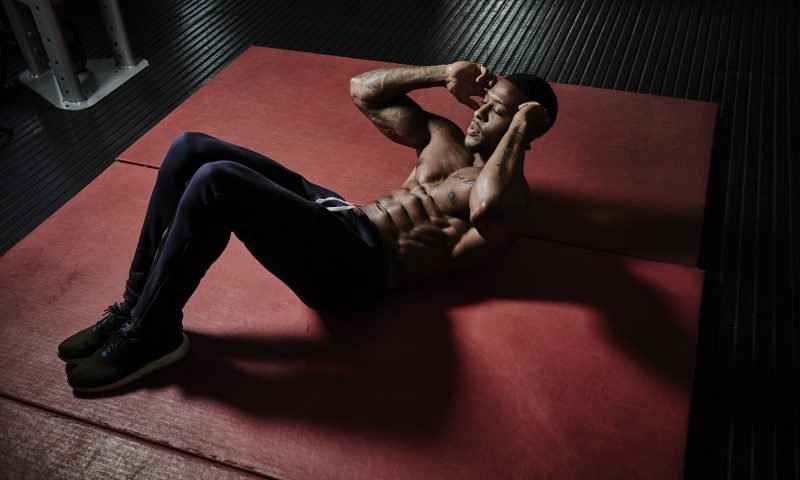
Training your core is central to any strength training routine, and crunches are a classic exercise to improve your balance and stability, and as an added bonus, get super ripped abs. You’ve probably been doing crunches for years, so that by now, the move is nearly second nature. But what if you’ve been doing crunches wrong this whole time? If you’re not focusing on your form to execute this motion, you might be cheating yourself of all the great benefits of this core exercise.
Let’s get the most benefit from this lower ab exercise. It doesn’t require any special gym equipment, and it’s customizable depending on your ability and your desired outcome. Here’s what you need to know to incorporate this ab workout into your plan.
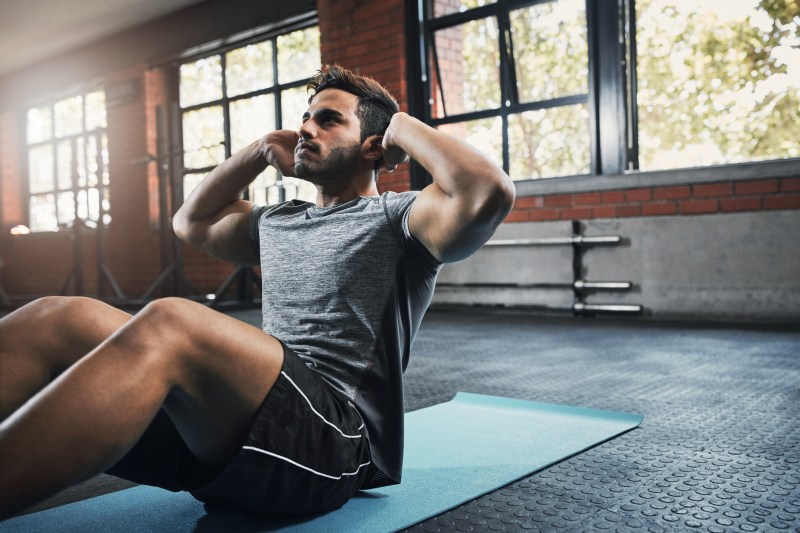
Crunches: The basic technique
Standard crunches are a floor exercise. Place something underneath your body to help cushion it; a towel or yoga mat will do.
- Lie down and place your feet hip’s width apart with your knees up.
- Place your hands on your chest (crossed is most comfortable).
- Inhale and contract your abs.
- Slowly exhale and lift your head and shoulders off the floor using your ab contraction to guide the motion. Remember to keep your shoulders and head relaxed.
- Slowly release back to the floor as you inhale.
- Repeat.
Quick tips:
- Don’t place your hands behind your head — You risk putting too much pressure on your neck.
- Use slow, controlled movements — Faster doesn’t give you more benefit.
- Make sure you remember to breathe — breath control is a big part of engaging your core.
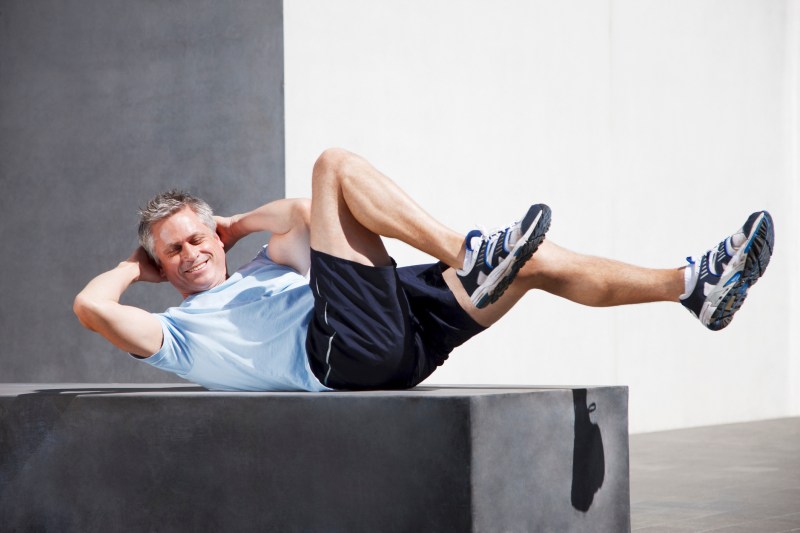
Bicycle crunches: Intermediate technique
Bicycle crunches work both the standard abs as well as the obliques.
- Get into the basic crunch position.
- Put your arms behind your head with your elbows pointing outward.
- Bring your head and shoulders off the ground and lift your knees to 90 degrees.
- Exhale and bring your left knee to your right elbow by rotating your trunk. Keep your elbows straight out. Pause for one moment.
- Inhale and return to your original position.
- Exhale and repeat but with opposite elbow and knee.
- Repeat, switching elbows and knees. One rep is one sequence.
Quick tips:
- Be sure to engage your core to keep your lower back on the ground.
- Remember to rotate your trunk, not your neck or head.
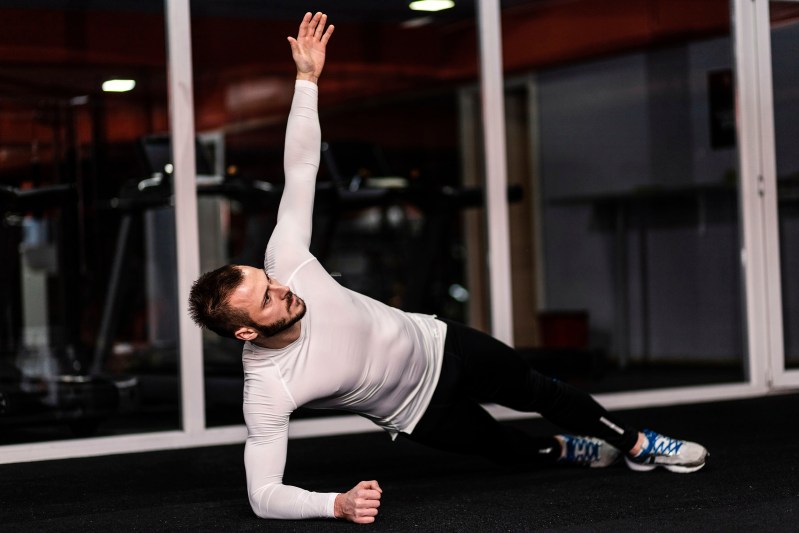
Side plank rotation: Advanced technique
Side crunches may be a classic move, but there is a better way to manage your obliques. These are oblique crunches, shoulder exercises, and overall core balance in one.
- Lie on your side and bring your legs together.
- Place your left elbow underneath you at 90 degrees and bring your hips off the floor. Make sure your body is straight by engaging your core.
- Lift your right arm out so that you’re making a “T” shape. When you have your balance, curl your right arm towards your body, rotating your trunk until your arm is swept underneath you.
- Bring your right arm back up until you’re in your original position. Repeat until you reach your desired reps.
- Change sides and repeat using the opposite arm.
Quick tips:
- Make sure you have good balance before attempting this exercise.
- Work on balance by bending your knees to balance for the exercise at first.
- Move slowly, and remember to breathe.

FAQs
If you still have questions about your crunch technique, we have answers.
Can crunches flatten your stomach?
Belly fat can be very stubborn. Crunches can be one tool to help strengthen your abs and provide definition. They can also help improve your overall core strength, which provides balance and support for your whole body. Crunches cannot, however, flatten your belly by themselves. Fat burning requires a whole-body approach, including diet and cardio. Doing ten million crunches won’t flatten your belly if you don’t have a holistic approach to fitness.
How many crunches should you do as a beginner?
As an absolute beginner, it’s best to start off with 10 to 20 reps. Listen to your body as you begin your exercise plan, and be sure to talk to your health practitioner. Gradually add five crunches as you build up your strength from week to week. Focus on slow, measured movements to maximize the effect of the exercise. The movements should never feel jerky, and remember to breathe.
How do you breathe when doing crunches?
Breathing properly during crunches is crucial for maximizing the effectiveness of the exercise and avoiding potential strain. You need to exhale as you contract your abs (crunch up). So think of squeezing your abdominal muscles as you lift your upper body off the ground. This exhalation is a forceful breath through your mouth as if blowing out a candle. You then inhale as you lower back down. While you’re slowing releasing the tension in your abs and return to the starting position, inhale deeply through your nose.
Which is better, situps or crunches?
Situps are another classic. They can certainly engage your core more, but the move puts way too much pressure on your back, neck, and shoulders. Crunches help protect you from straining too much and can still target your core with efficiency. That said, crunches can still put a lot of strain on your back and shoulders. Be sure you’re taking your time and following the form closely. Without the proper form, crunches may be as dangerous as situps.
What are the benefits of crunches?
With the right technique, crunches can help build core strength and definition. Your core is a vital part of your balance and helps prevent injury from other exercises. It’s easy to do and doesn’t require any extra equipment or much technique (other than mastering the basics).
What are the downsides of crunches?
Crunches may seem easy. However, if you aren’t concentrating, you can throw your form off and put too much strain on your neck or shoulders. Plus, trying to do too many at once can cause pain or injury. The best thing for you is to master the basic crunch techniques first. Start with a few reps and listen to your body. As you progress, you can add more reps or start on a more complex crunch. You can even add things like cable crunches to your gym time once you’ve mastered the basics.
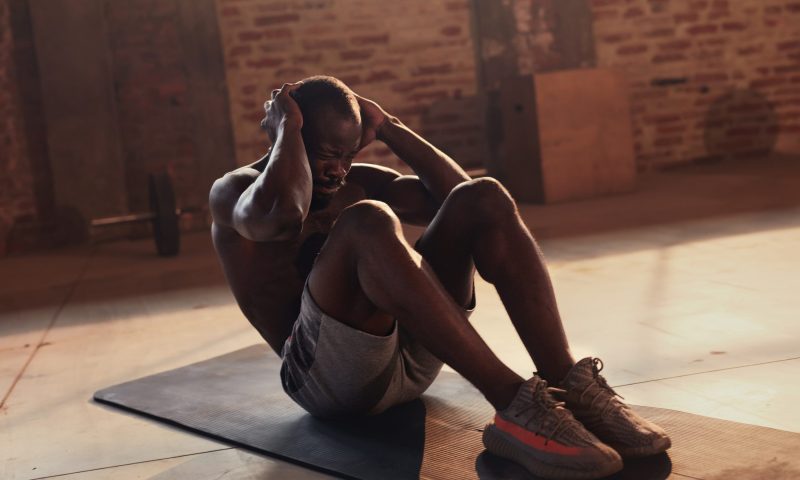
Building the correct crunch technique
You should first practice the basic crunch technique before branching out to other types of exercises. The basic crunch for belly fat can be a part of your overall exercise regimen, but keep something in mind. Without a holistic fitness and dietary plan, you won’t cut through fat or build a body that you love.
If you want to add crunches to your overall fitness routine, make sure you talk to your trainer or start slow. They can be one tool to help you sculpt the body you want and strengthen your core.

